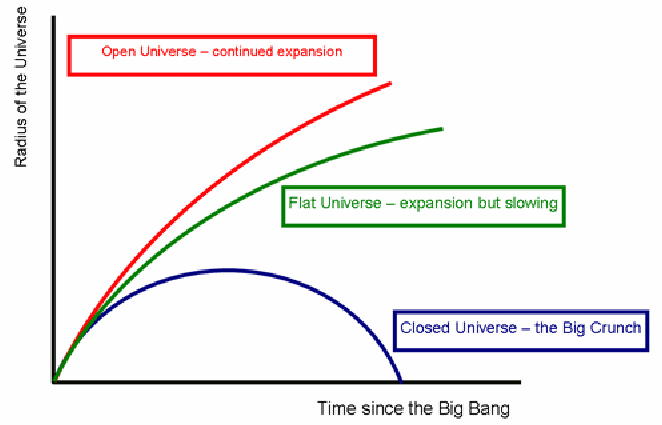We can analyse the light from distant stars because the light that we receive is full of light and dark lines characteristic of the elements of which the stars are made and the elements in the space between us and the star. When we look at the light from distant stars we notice that the wavelengths of the light we receive are shifted from the wavelengths we would expect. The wavelengths are in fact longer, indicating that those stars are moving away from us. This increase in wavelength is called a redshift. Stars that are moving away from us more rapidly have a bigger redshift. Light from distant stars and galaxies is almost all redshifted, and the amount of the redshift increases with distance, indicating that the most distant galaxies are moving the fasted.
This all suggests that the Universe is expanding. We can trace this expansion back. This implies that at some time in the distant past all the matter of the Universe was concentrated at a single point. At that time there was a massive explosion and the Universe was created. This is called the 'Big Bang'. Since the Big Bang the Universe has been expanding. The future of the Universe is not known at the moment but there are three possibilities.

The Universe will one day stop expanding and start to contract. The Bing Bang will happen in reverse and everything will be destroyed in a 'Big Crunch'. The Universe will be closed and the density is great enough to force this to happen.
The Universe will continue to expand forever, possibly speeding up as the expansion continues. The Universe will be open and the density of the Universe is below a certain critical value.
The Universe is balanced between expansion forever and one day contracting. The Universe is flat. The density of the Universe is a critical value, making it completely flat.
In the last two case the Universe will expand and cool forever, one day becoming featureless and cold.
